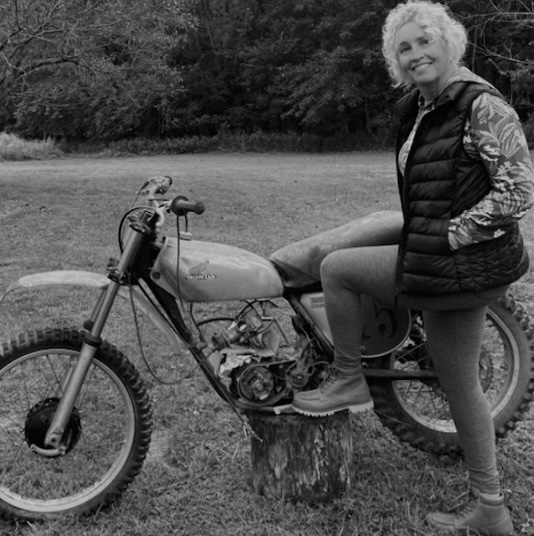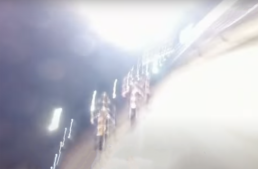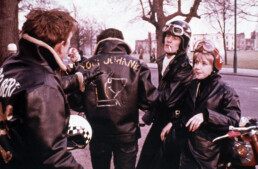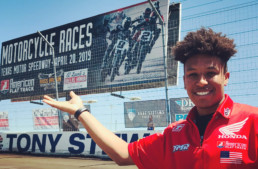By Catherine O’Connor
Angela Savage wishes she could turn back time. The posthumously born daughter of flat tracker turned Indy driver, David Earl “Swede” Savage, Jr. wore all black to this year’s Indianapolis 500. In the midst of stoked Memorial Day revelers cheering and screaming for their favorite Indy rivals, Angela did her best to cope, sitting in the stands with her 17- and 11-year-old sons. She often wears the Swiss-made Omega Speedmaster watch and her father’s wedding ring as an amulet to feel close to him.
“I kept staring at turn 4, knowing his spirit was there. I cried a lot, and just couldn’t stay for the whole race, just wishing I could have my dad back,” Savage said. Growing up she always felt lost and abandoned and so lonely. And Father’s Day won’t be easy.


Born three months after her mother witnessed her father’s fatal crash, Angela Savage spent decades suffering crippling addiction and mental health challenges. What the younger Savage learned was that she was dealing with inter-utero, psycho-injury, a type of inherited trauma that can be passed down from a pregnant mother to her child. Mourning a bewildering sense of longing for the father she never met, Angela spent years struggling to reconcile the history and meaning of his death and life, painfully detangling herself from the unexplained, trans-generational life stress surrounding her Savage legacy.
But with the help of a group of endearing fans and IMS, (Indianapolis Motor Speedway) she had a chance encounter with Ted Woerner. He is an author and impassioned Indy fan who had heard about his hero, Savage’s crash, on the transistor radio he smuggled into his sixth-grade classroom. Their support enabled Angela to find the courage to finally visit the track which took her father’s life. ”It was like soul surgery,” Angela has said of her visit to the Indianapolis Motor Speedway, where the fatal tragedy occurred 50 years ago.

Together they collaborated to write Savage Angel: Death and Rebirth at the Indianapolis 500, a book that skillfully and candidly interweaves details of her life trauma and eventual healing, with revelations of a unique motorsports legacy. Among Savage’s memorabilia are news clips showing that Swede raced as an AMA Amateur in 1965 at the Springfield Mile. Revisiting the motorcycle track where he competed alongside contemporaries, Bart Markel, Dick Mann, Gary Nixon and Eddie Wirth, to watch her first motorcycle race a couple years ago, in Springfield, lifted Angela. “I was blown away at my first flat track race. I just love it!” Angela said.
Her imagination must run to the 18-year-old Swede, the blonde hunk, the son of a prosperous veterinarian, a carefree rebel, traveling the flat track circuit, in the mid 1960’s. From Ascot to Daytona and state fair tracks across the Midwest, in bar-banging combat, Savage competed in AMA’s Expert class finishing among the top 20 riders in the nation, with a total of 24 career AMA wins.

Angela, who now works for Woerner’s Miles Ahead company in Indianapolis, can step into the past in the Savage suite exhibit room that has been created there. Shelves hold her father’s early race artifacts, his tattered leathers, steel shoe and images of the photogenic, beloved native son of San Bernardino. Recognized early for his innate riding performance talent, the original letter Savage signed for a short term deal with Evel Knievel to perform in his Stunt Show of Stars at Ascot Park in 1967, is framed in glass. Pages of emergent race accomplishment, in a “race resume” typed in 1969 by a young David Savage Jr. is but one curated clue in the historic archive Woerner has meticulously pieced together.
A wall of Swede’s 70’s vintage auto racing suits, are a neatly hung team of empty fabric onesies that brave, Indy drivers wore before the evolution to today’s high-tech safety gear. On the wall, charred remains of his race car nose section with Swede’s race number 40, marred and scorched, steels a horribly devastating moment in time.

Woerner and Savage often meet motorsports fans who are intrigued by Savage’s story of evolution from two wheels to four, and the impact of his life ended too soon. The California native, her husband and family relocated in 2018 to live in Indianapolis, the city where Angela’s father died. Angela’s message of healing and survival simply flows out. “I’m proud that the Savage family is still here, 50 years later. I want to tell my story, and his story.”
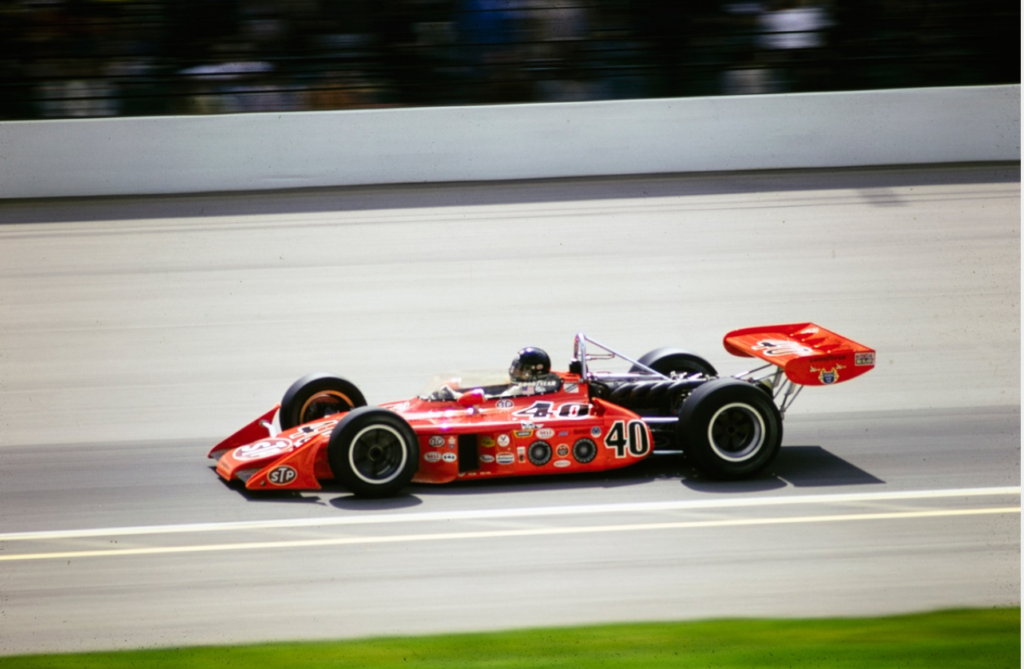
Buoyant and open to talk, Angela Savage along with documentarian Ted Woerner, who continues researching the life and times of Swede Savage, will be on hand at the Illinois State Fairgrounds Springfield Mile on Sept 2-3. There, auto racing fans’ eyes will pop, when they see Woerner’s freshly painted dayglow red #40 STP Oil Treatment Special Eagle-Offenhauser replica of Swede Savage’s STP race car, a special premiere feature at this year’s Springfield Mile.


Please check out SAVAGE42.com for more info.
